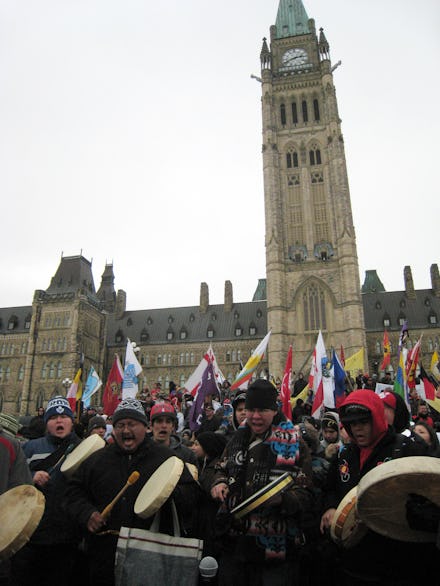First Nations Tribe Declares State of Emergency Amid Wave of Suicide Attempts

Leaders of the Attawapiskat First Nation in Ontario, Canada, declared a state of emergency this weekend after 39 people tried to kill themselves over the past month and a half.
Reuters reported the tribe has just 2,000 members, 28 of whom attempted suicide in March and 11 of whom have tried in April so far.
"The news from Attawapiskat is heartbreaking," Canadian Prime Minister Justin Trudeau tweeted on Sunday. "We'll continue to work to improve living conditions for all indigenous peoples."
Chief Bruce Shisheesh of the Attawapiskat First Nation signed the emergency declaration on Saturday. The regional First Nations government has dispatched a crisis response team to the area since then, including two mental health counselors.
There are 1.4 million First Nations people in Canada, constituting 4% of the population, according to Reuters. The Attawapiskat First Nation is located in a remote area of the Kenora District in northern Ontario, Canada's most populous province.
According to Health Canada, First Nations young people attempt suicide at five to six times the rate of non-First Nations youth, making suicide the leading cause of death among their cohort.
"This is a systemic crisis affecting the communities," Charlie Angus, the local member of parliament, told Reuters. "There's just not been a serious response from any level of government until now."
The suicide risk factors facing these children are myriad. Experts believe a major determinant is the legacy of Canada's residential schools, which existed from 1876 to 1996 as a way to forcibly assimilate First Nations kids into white Canadian culture.
Approximately 6,000 children died in these residential schools over the course of their existence, according to the Guardian. Physical and sexual abuse ran rampant there. The effects, including high rates of depression and PTSD among survivors, are still felt today.
But in recent years, the disparities facing First Nations people have been a hot button topic in Canada. One of the major policy shifts of Trudeau's government has been to renew focus on them.
Shortly after his election, Trudeau committed his administration to an inquiry into the plague of missing and murdered First Nations women, a phenomenon of which his predecessor, Stephen Harper, had proven dismissive.
Up to 4,000 First Nations women were murdered or went missing in Canada since 1980, the New York Times reported. First Nations women are just 4% of the country's female population, but make up 16% of women who were killed between 1980 and 2012.
The government of Ontario has committed $100 million over the next three years to address the problem, but in the meantime, the troubles facing First Nations people continue to devastate nationwide. Just last month, the Cross Lake First Nation in Manitoba declared a state of emergency as well, citing six suicides in two months and 140 attempts in just two weeks.
h/t Reuters